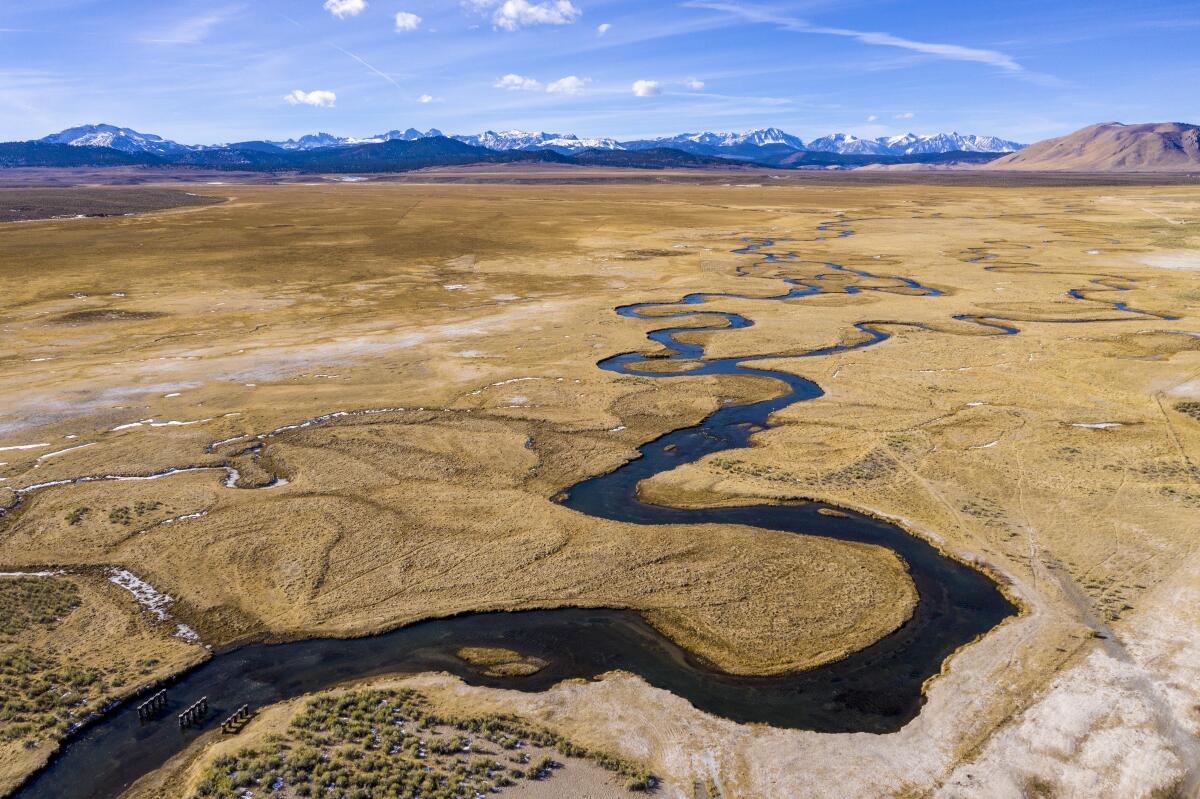Op-Ed: In drought-stricken California, who owns water rights can still be a mystery

- Share via
As we careen deeper into drought, California will face increasing impacts to urban and agricultural economies, rivers and forests, and wildlife.
In response, government agencies will need to determine how to allocate water among competing needs. Water users will scramble to buy and sell water — if they can — or reduce their use. But the current lack of information hobbles the ability to make difficult decisions about water management. For California to cope with persistent shortages, water rights data need to be accessible to decision-makers and the public.
Most residents assume that because their home water use is metered we would understand water use in the state as a whole, and that water management is a routine matter. This could hardly be further from the truth.
In contrast to household taps, diversions from rivers and streams typically are unmeasured or unreported. Further, most essential documents are inaccessible, so we simply don’t know who can legally use water at a given time and place. Here in the land of Google, basic water information remains trapped, obscuring water management.
It seems absurd: A fundamental resource underpinning our economic, social and environmental well-being is managed with 19th century information technology. The relevant public records are effectively buried. More than 10 million pages of paper files sit in storage rooms, collecting dust. Legal records for older rights — some dating to the 19th century but still binding today — are scattered in 58 county courthouses and other repositories.
The situation is the result of underfunded agencies, haphazard attention to information technology, and years of political inertia. Given the lack of data, it is immensely difficult to resolve conflicts or manage shortages.
Water rights help determine who may use water, when, where and for what purpose. The right to divert and use water is mediated by the state’s responsibility to protect public health and the environment. In the absence of accessible legal information, neither regulators nor water users can have clarity about their options.
Under California’s legal system, drought management should be an organized and rational process of determining the water needed for fish and wildlife, allocating the remaining available water to the most senior users, telling lower priority diverters to stop withdrawals, and facilitating water trading and alternative water sources. Instead, because of the lack of information, California is unable to align available supply systemically. Basically, it’s chaos.
Other Western states routinely manage water shortage informed by relevant information. California does not. It makes no sense economically or environmentally.
A first step to efficient water management is building a system that makes this basic information available to all. New research from UC Berkeley School of Law shows that it can be done. Over the last two years, in partnership with the Los Angeles Department of Water and Power, we digitized more than 130,000 pages of documents and built an indexed, searchable database that makes legal documents from the Mono Basin water region accessible. Now, anyone can view the complete basis for water rights that previously would have taken weeks or months for attorneys to unearth, and see how water rights in the basin relate to one another. Shockingly, this has never been done before in California.
For a small investment, the content and functions of our database could be expanded statewide. Other states have long made this kind of information available and routinely manage their water using relevant data. California can do this, too. The cost would be trivial compared with water infrastructure expenditures and a tiny share of the state’s current budget surplus.
During California’s last drought, the Legislature established requirements for integration of existing data and allowed state agencies to require water use reporting. These are laudable goals, but without a place to put reporting data there is no reasonable way for the state to request it from water users. A modernized water rights information system can receive reporting data, and is a necessary complement to such mandates. Without it, they offer little value.
The current state budget proposal contains $3 billion for drought-related investments. A small fraction of that can transform water information. That funding needs to be supported and protected in the final bill.
There is no excuse for flying blind when it comes to water. Modernizing water rights information is a critical step toward enabling California to manage resources and plan for a drought-ridden future.
Michael Kiparsky is the director of the Wheeler Water Institute in the Center for Law, Energy and the Environment at UC Berkeley School of Law.
More to Read
A cure for the common opinion
Get thought-provoking perspectives with our weekly newsletter.
You may occasionally receive promotional content from the Los Angeles Times.










